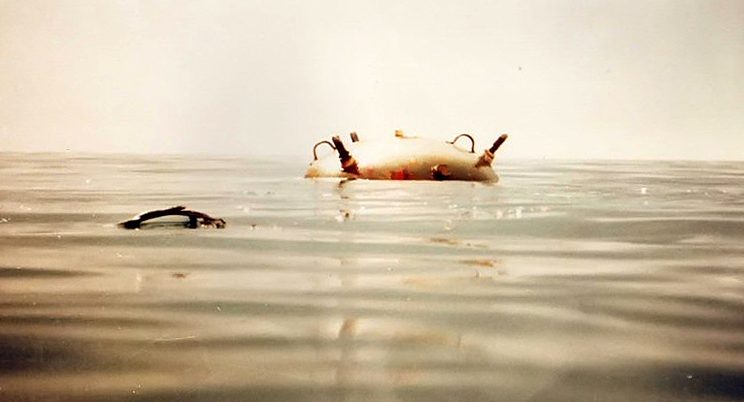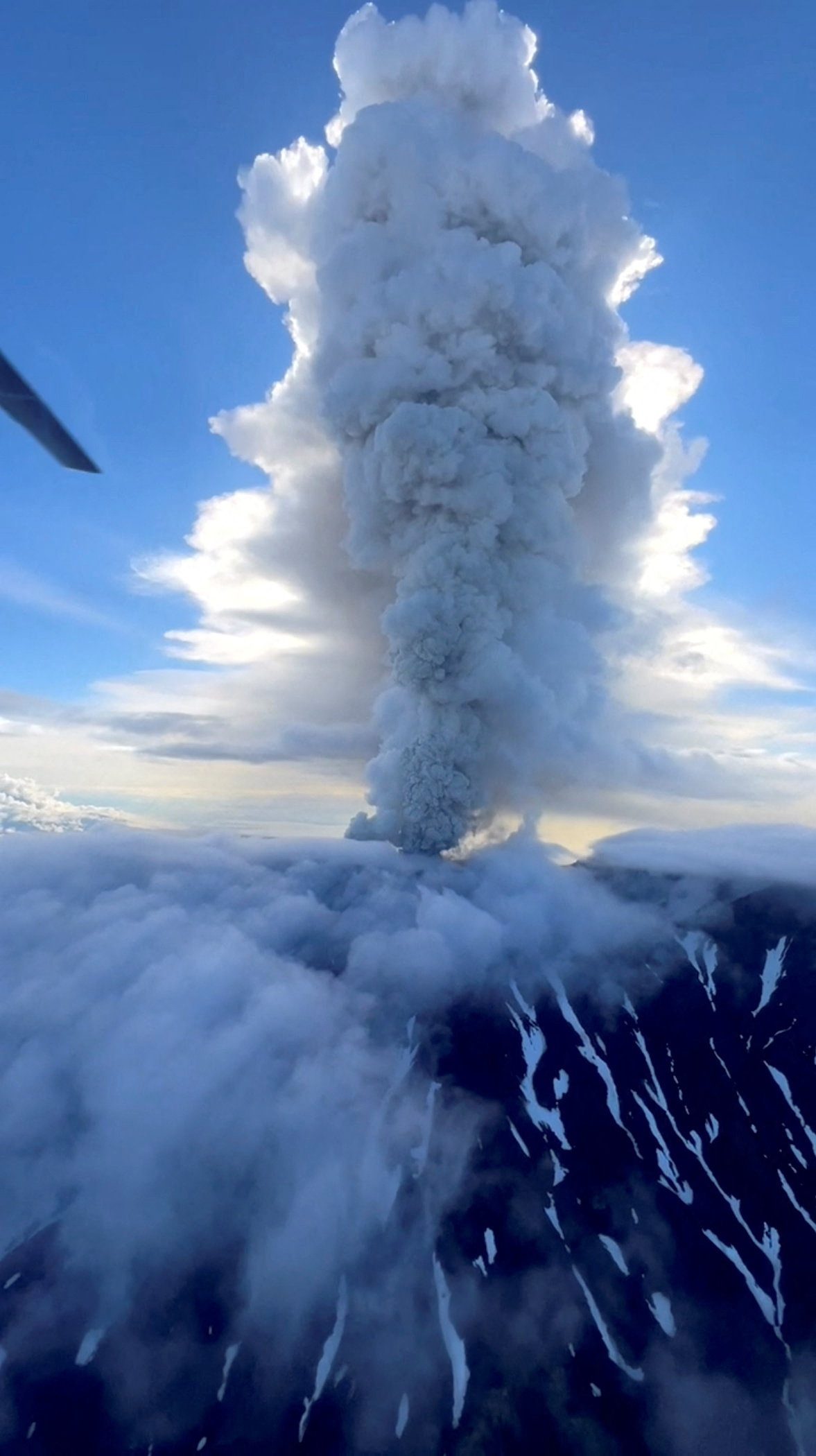(Bloomberg) — Iran probably would attempt to block the Strait of Hormuz at the mouth of the Persian Gulf only as a “last resort,” according to a Pentagon historian who’s written a new history of America’s 33-year shadow war with the Islamic Republic.
Iran has greatly improved its ability to disrupt shipping through the strategic waterway, the route for a fifth of the world’s traded oil, said historian David Crist. Still, the Islamic Republic’s economy also relies on shipping through the Strait, he said.
“Their prime means of exporting oil is through the Strait,” said Crist, author of “The Twilight War: The Secret History of America’s Thirty-Year Conflict with Iran” (Penguin Press, 656 pages, $36), in an interview. “If they mine, it means their oil is not coming out, either. So ultimately it either cuts off their nose to spite their face” or it would be an attempt to pressure the international community to resolve a crisis.
“I’ve always viewed that the Iranians see that as an option of last resort if all else fails,” Crist told an audience August 1 at the International Spy Museum in Washington.
Other U.S. officials are less sanguine, and in September the U.S. and 20 allies will stage a minesweeping exercise in the Persian Gulf that the U.S. Central Command said will be the largest ever.
The International Mine Countermeasures Exercise 2012 “demonstrates the international community’s ability to work together to ensure free and secure trade,” Marine Corps General James Mattis, the head of the U.S. Central Command, said in a July 17 statement.
American Fears
The American fear, said one U.S. official involved in Iran policy, is that the U.S. and international economic sanctions intended to pressure Iran to abandon its suspected pursuit of nuclear weapons could instead persuade its leaders that they have little to lose by mining the Strait, sinking a tanker, or attacking oil facilities in Saudi Arabia or elsewhere.
U.S. and international sanctions against Iran are costing it $133 million a day in lost sales, according to data compiled by Bloomberg. Shipments from Iran have plunged by 1.2 million barrels a day, or 52 percent, since the sanctions banning the purchase, transport, financing and insuring of Iranian crude began July 1, also according to data compiled by Bloomberg.
Annualized, that would cost President Mahmoud Ahmadinejad’s country about $48 billion in revenue, equivalent to 10 percent of its economy.
Gasoline Prices
A second U.S. official, who also works on Iran policy, said some White House officials worry that if Iran retaliated for the sanctions by provoking even a brief crisis in the Gulf, that could send gasoline prices — already rising as the Midwest drought drives up the cost of corn-based ethanol — toward $5 or more a gallon as Election Day approaches. Both U.S. officials asked that their names not be used because they weren’t authorized to speak publicly.
Iranian officials last year and this year repeatedly threatened to close the Strait in retaliation for the sanctions. Laying mines or sinking a ship in the Strait of Hormuz would disrupt tanker traffic and also could prompt insurance companies to raise rates on tankers, leading at least temporarily to higher oil prices.
“I think Iran is making these pronouncements to help drive up oil prices and make up some of the difference for the lost revenue caused by the sanctions,” said Crist. “It is an interesting strategy that puts their statements in context.”
Iran, he said, has increased its reliance on mines since its war with Iraq in the 1980s and engagements with the U.S. Navy in 1987 and 1988 after U.S. vessels were damaged by mines.
Growing Inventory
Its inventory of mines, many of the type laid during the 1980s against Iraq and international shipping, has grown to more than 5,000, Crist wrote.
“Let’s just say they have enough resources and forces to do it if they set they mind to” attempt a disruption, Crist said. “That’s provided that there’s no international effort to stop it, which I think there would be,” he said.
Disrupting shipping has been on their minds for a long time, Crist said. During a September 1987 attack on the Iran Ajr vessel after it laid mines to disrupt shipping in the Gulf, U.S. Navy Seals discovered a war plan to close the Strait, approved in 1984 and called “Ghadir,” Crist writes in his book. A class of Iranian midget submarines — another potential threat to shipping in the Gulf — uses the same name, taken from Ghadir Khumm, an Islamic holy place in modern-day Saudi Arabia.
So far, the oil markets have ignored Iran’s history and rhetoric. While Iran’s threats to disrupt the flow of oil through the Persian Gulf sent crude to a three-year high in March, increased production from Saudi Arabia, a U.S. output boom, and the slowing global economy have brought prices down 16 percent from the highs to about the level at the start of the year.
Falling Prices
Brent oil closed at $108.94 a barrel on Aug. 3 on the London-based ICE Futures Europe exchange, down 1.5 percent from Jan. 23 when European Union ministers approved a ban on the purchase and insurance of Iranian oil. The U.S. is paying 6.2 percent less than a year ago for imported crude as domestic fields produce the most in 13 years, driving stockpiles to all- time highs, Energy Department data show.
Nevertheless, the Obama administration and some European allies and Persian Gulf states have embarked on a Gulf military build-up to deter any Iranian attempt to disrupt oil shipping, production, or refining.
U.S. 5th Fleet commander Admiral Mark Fox told reporters in February the Navy would a consider Iranian mine-laying an “act of war,” and the Navy has doubled to eight the number of counter-mine ships in the Persian Gulf region.
Second Carrier
The U.S. Navy also announced a new aircraft carrier rotation last month that will keep two aircraft carrier strike groups in the region until at least late-March. The Pentagon previously had said the two-carrier presence would end Sept. 30.
The United Arab Emirates in late December signed a deal valued at as much as $3.49 billion for the first international sale of Lockheed Martin Corp.’s newest missile interceptor.
The Navy also is using its first high-altitude drone to monitor Iranian military activity and vessel movements in and around the Strait of Hormuz, according to service officials.
The unmanned aerial vehicle built by Northrop Grumman Corp. of Falls Church, Virginia, is providing broad coverage of the strategic waterway from 60,000 feet, collecting and transmitting black-and-white still images from the drone to a ground station in Maryland which are re-transmitted to 5th Fleet naval vessels in the region within minutes on average.
Mattis and Chief of Naval Operations Admiral Jonathan Greenert have utilized a “Fast Lane” acquisition approach this year to accelerate upgrades to the U.S. 5th Fleet, based in Bahrain.
It includes fielding new laser target-trackers on coastal patrol craft; enhanced sensors for underwater vehicles; improved protection against drone attacks for land bases; upgrades of U-2 spy planes; a new short-range missile called the Griffin, made by Waltham, Massachusetts-based Raytheon Co., and a new underwater drone called the Seafox, which is being developed for Lockheed Martin of Bethesda, Maryland, by a unit of Bremen, Germany-based Atlas Elektronik GmbH., to detect and neutralize mines.
– Tony Capaccio, Copyright 2012 Bloomberg

 Join The Club
Join The Club











